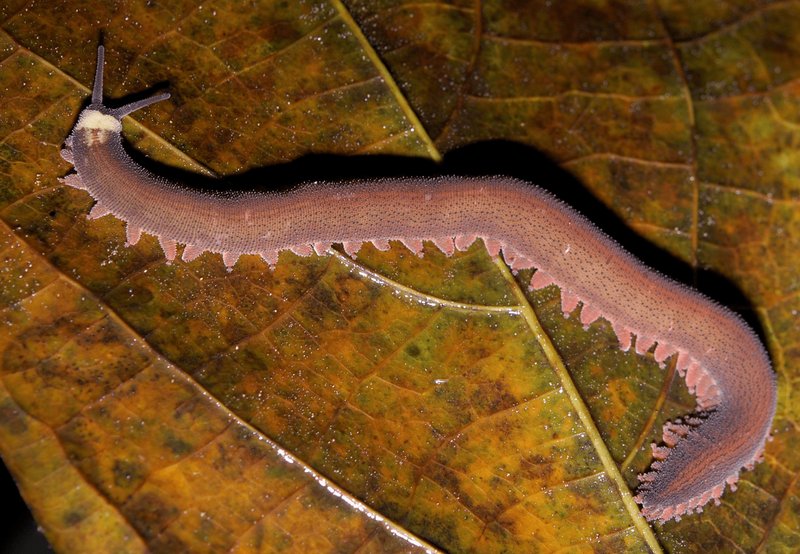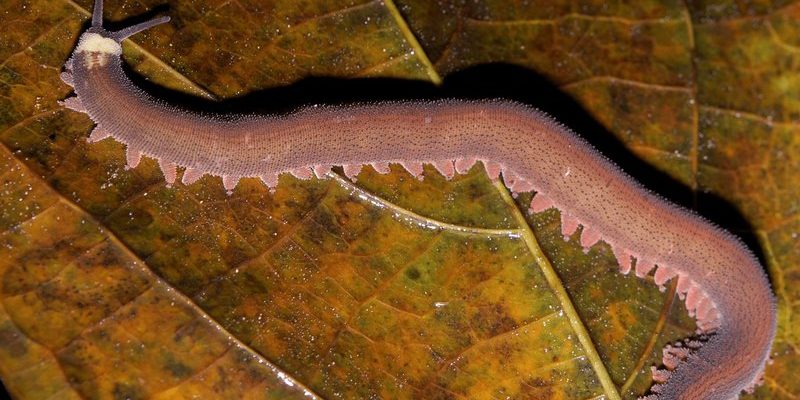
Imagine you’re at a buffet. There are all kinds of dishes laid out, and everyone is trying to grab their favorites while being polite. Some people might get a little pushy when it comes to the last piece of pie. **Invertebrates**, like velvet worms, often find themselves in a similar situation in the natural world. They’re all seeking food, mates, and suitable habitats, and sometimes that means they have to contend with one another. But how does this competition unfold? And what strategies do velvet worms employ to thrive in their environment?
Let’s explore these questions together as we delve deeper into the world of velvet worms and their interactions with fellow invertebrates.
The Velvet Worm: A Unique Predator
Velvet worms may look like a cross between a caterpillar and a slug, but they’re anything but ordinary. They belong to a group of ancient invertebrates known as **Onychophora**, and they have some fascinating features. For starters, these creatures have **segmented bodies** covered in a soft, moist cuticle. It gives them that velvety appearance and allows them to thrive in humid environments like leaf litter in tropical rainforests.
But what truly sets velvet worms apart is their hunting strategy. Instead of chasing down prey like many other predators, they employ a clever technique. They can shoot a sticky, slime-like substance from their lobed appendages to ensnare unsuspecting prey, usually small insects. This method allows them to capture food without strenuous effort, which is essential because they need a dense, moist habitat to survive.
You might be wondering how such a unique hunting style impacts their competition. Well, it turns out, velvet worms face challenges from both their prey and other invertebrates in their habitat.
Competition for Food: A Sticky Situation
Food is life, right? That’s true for velvet worms too. Although they are efficient hunters, they aren’t the only ones in the game. Other invertebrates, such as spiders and centipedes, also prey on the same small insects. This brings about a form of competition that can impact how velvet worms hunt and claim their territory.
When it comes to food, velvet worms are relatively specific in what they eat. They tend to go after soft-bodied insects, which can be a limited resource. If the population of these insects declines or if other predators become more aggressive, velvet worms might find it challenging to fill their bellies. The competition for food becomes a balancing act, and they often need to adapt to the pressures around them.
Interestingly, velvet worms’ habitat plays a role here, too. They thrive in rich, moist ecosystems where there’s a plethora of insects. If other invertebrates disrupt that harmony, it could mean fewer meals for the velvet worms.
Spatial Competition: Claiming Territory
Beyond just grabbing a quick bite, velvet worms also face competition for territory. Just like some people might claim the best seat at a concert, these invertebrates need to stake their claim in their environment. Velvet worms require specific habitats to live and hunt effectively; they prefer dark, damp places like leaf litter and decayed wood.
When other species, like ants or beetles, move in, the velvet worms face both direct and indirect competition. If other invertebrates colonize an area, they might outcompete velvet worms for prime real estate. The struggle becomes a game of patience and strategy—each species trying to navigate the delicate balance of survival.
Here’s the thing: while velvet worms can be resilient, they also need to be smart about where they choose to hang out. They might need to move to less desirable areas if their favorite spots are taken over by more aggressive competitors.
Predation: The Circle of Life
You might be surprised to find out that velvet worms, while they are predators themselves, also have to watch out for larger predators. **Birds**, **mammals**, and even larger invertebrates may see them as a tasty snack. This adds another layer to their competition with other invertebrates, especially those that share the same habitats.
Predation can be fierce, and velvet worms need to be clever about their defense strategies. They rely on their moist skin to keep them hidden and camouflaged. If they can blend in with their surroundings, they stand a better chance of avoiding becoming a meal.
Interestingly, the relationships between predatory invertebrates can also shift the balance of competition. If velvet worms are abundant, they might attract predators that would otherwise go after other invertebrates. This means that velvet worms can indirectly affect the populations of competing species in their habitat.
Adaptations: Thriving Amid Competition
To survive in such a competitive environment, velvet worms have developed several fascinating adaptations. Their unique hunting method, as mentioned earlier, is one of the most significant ways they thrive. But it doesn’t stop there.
For starters, velvet worms have a low metabolic rate. This means they don’t require as much food as some other invertebrates. In a world where food can be scarce, this gives them an advantage. They can go longer without eating, allowing them to survive when other friends might have to compete more aggressively.
Their ability to reproduce efficiently also plays a critical role. Velvet worms often practice **viviparity**, which means they give birth to live young instead of laying eggs. This ensures that their offspring have a better chance of survival in a competitive world. Fewer eggs could mean a better chance of finding food—there’s always a trade-off.
These adaptations allow velvet worms to navigate the challenges of competition, making them more resilient in their environments.
The Bigger Picture: Ecosystem Impacts
Understanding how velvet worms compete with other invertebrates helps us see the bigger picture of ecosystems. Every creature plays a role, from predators to prey, and everything in between. If velvet worms were to disappear from their habitat, it could lead to a ripple effect impacting the insect population, the growth of vegetation, and even the larger predators that rely on those insects for survival.
Velvet worms help maintain the ecological balance. They serve as both predators and prey, connecting various parts of their ecosystem. Their unique adaptations and competitive strategies can impact the dynamics of other invertebrates, showing that even the smallest creatures can have significant effects.
This interconnectedness illustrates the importance of every species within an ecosystem, reminding us that conservation efforts should consider not just the most charismatic animals, but each and every organism.
So, do velvet worms compete with other invertebrates? Absolutely! They engage in a subtle yet complex dance of survival that involves food, territory, and environmental adaptations. You might not see velvet worms darting around like some flashy predators, but their quiet existence in the shadows tells a compelling story about life and competition in the natural world.
In the end, it’s not just about who’s the strongest or the fastest; it’s about how well each species adapts to its surroundings. Velvet worms remind us that even the smallest creatures play a crucial role in the ecosystem. So, next time you find yourself wandering through a forest, take a moment to appreciate the velvet worms and their quiet resilience in a world filled with competitive challenges.

